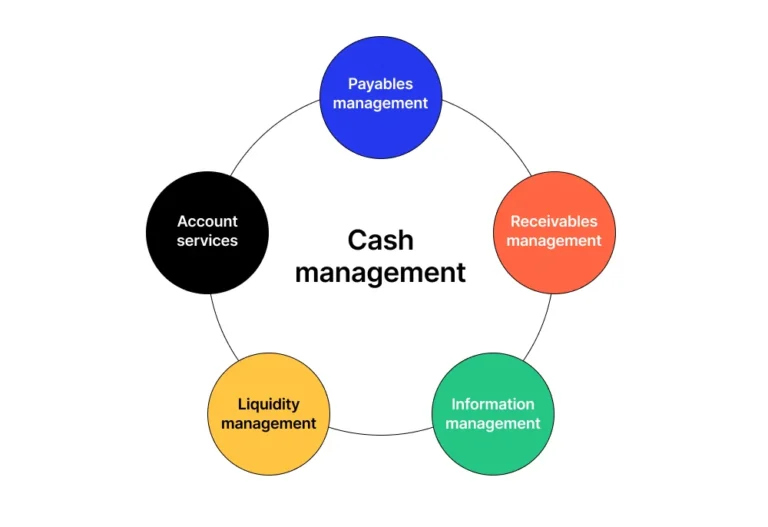Introduction
Canada, known for its vast landscapes and natural beauty, is increasingly committed to tackling the challenges posed by environmental degradation. As the world faces growing concerns about climate change, biodiversity loss, and pollution, Canada has taken several steps to promote sustainability and environmental conservation. From government policies to grassroots initiatives and individual actions, sustainability in Canada is more than just a buzzword – it’s a movement shaping the country’s future.

In this article, we’ll explore Canada’s efforts to promote sustainability, focusing on government policies, community projects, and individual contributions to environmental conservation. The objective is to shed light on the proactive steps Canada is taking and how citizens and organizations are playing their part in preserving the planet for future generations.
Key Points Overview
- Government Policies and National Programs
- Local Community Projects and Grassroots Initiatives
- Individual Actions for a Sustainable Future
- Canada’s Renewable Energy Transition
- The Role of Innovation in Sustainability
- Challenges and Opportunities for Sustainable Development in Canada
Detailed Discussion
1. Government Policies and National Programs
The Canadian government has been actively involved in shaping the nation’s sustainability efforts. National policies focused on climate change mitigation, environmental protection, and green energy development play a critical role in Canada’s overall strategy for sustainability.
Canada’s Carbon Pricing Strategy
One of the most significant initiatives the Canadian government has implemented is the carbon pricing strategy. Carbon pricing is designed to encourage businesses and individuals to reduce their greenhouse gas emissions by putting a price on carbon. This incentivizes the adoption of cleaner technologies and energy sources. In 2023, Canada implemented a federal carbon tax, which applies to industries producing significant emissions, including oil and gas. The tax is expected to help Canada achieve its ambitious target of net-zero emissions by 2050.
Not only does carbon pricing help reduce emissions, but it also promotes innovation in green technology by making fossil fuels more expensive and renewable alternatives more competitive. For example, energy efficiency in the industrial sector is a key focus, and companies are increasingly investing in cleaner and more sustainable solutions.
The Clean Growth and Climate Change Plan
In 2016, the Canadian government unveiled its Clean Growth and Climate Change Plan, which includes a wide range of initiatives aimed at reducing emissions and boosting green innovation. The plan focuses on clean energy, energy efficiency, carbon capture, and the development of green technologies. Through the creation of clean-tech clusters, Canada has been encouraging innovation in industries such as transportation, construction, and agriculture to reduce their environmental footprint.
The government has invested heavily in research and development, supporting emerging green technologies that can revolutionize how Canada produces and consumes energy. This includes investments in electric vehicle technology, energy storage solutions, and renewable energy infrastructure.
2. Local Community Projects and Grassroots Initiatives
While government policies play a crucial role in shaping national environmental strategies, local community projects and grassroots initiatives often provide the foundation for sustainable practices. Many communities across Canada have come together to create projects that promote recycling, local food production, and environmental education.
Community Gardens and Urban Farming
Urban farming and community gardens are becoming increasingly popular in Canadian cities. These initiatives not only help to reduce the environmental impact of food transportation but also provide an opportunity for local communities to reconnect with nature. From Vancouver to Toronto, cities have witnessed a rise in urban farming initiatives that encourage residents to grow their own food in shared spaces. These projects contribute to sustainability by reducing food waste and lowering the carbon footprint associated with food production.
For example, in Vancouver, the “CityFarm” project has helped local residents grow fresh produce in urban areas, while also teaching them about the benefits of sustainable food practices. Such projects also strengthen local food security by reducing reliance on imported food, which often has a higher environmental cost due to transportation emissions.
The Zero Waste Movement
The Zero Waste Movement has gained traction in several Canadian cities, including Victoria and Montreal. The goal of the movement is to minimize waste sent to landfills and promote the reuse, recycling, and composting of materials. Several community-based organizations are working to reduce plastic consumption, promote sustainable packaging, and educate the public about responsible waste management practices. This collective effort is helping Canada inch closer to achieving a circular economy, where materials are continually recycled and reused.
Victoria, for instance, has been a leader in zero-waste initiatives, with the local government collaborating with residents and businesses to drastically reduce waste. Through a combination of education campaigns, waste sorting programs, and partnerships with local businesses, Victoria has achieved remarkable success in reducing landfill waste.
3. Individual Actions for a Sustainable Future
While large-scale policies and community initiatives are essential, individual actions play a significant role in Canada’s journey towards sustainability. Canadians have increasingly embraced eco-friendly practices in their daily lives, contributing to the country’s environmental goals.
Embracing Renewable Energy
Canadians are increasingly investing in renewable energy sources such as solar panels, wind turbines, and geothermal heating systems. In fact, Canada ranks as one of the top countries globally for per capita use of renewable energy. Many households in provinces like Ontario, British Columbia, and Alberta have adopted solar energy as an affordable and sustainable way to power their homes. These individual actions are helping reduce reliance on fossil fuels and decrease overall carbon emissions.
The growth of renewable energy among individuals has been supported by federal and provincial rebates, making it more accessible for homeowners to invest in solar panels and energy-efficient home upgrades. This transition not only saves money on energy bills but also plays a crucial role in reducing Canada’s carbon footprint.
Sustainable Transportation Choices
Canada has also seen a rise in the adoption of electric vehicles (EVs). With government incentives and rebates available for EV buyers, many Canadians are making the switch to electric cars. Additionally, cycling and public transportation are becoming popular alternatives to driving, especially in urban areas. This shift towards sustainable transportation not only reduces carbon emissions but also improves air quality in cities, making them more livable for future generations.
In major cities like Toronto, Vancouver, and Montreal, the adoption of electric bikes and car-sharing programs has also risen dramatically. These initiatives offer residents convenient, eco-friendly transportation options while reducing the need for private car ownership.
4. Canada’s Renewable Energy Transition
Canada’s transition to renewable energy is a critical part of its environmental strategy. The country is endowed with abundant natural resources such as hydroelectric power, wind, and solar energy, which are essential in moving away from fossil fuels.
Hydroelectric Power
Canada is a global leader in hydroelectric power, which accounts for nearly 60% of the country’s electricity generation. Provinces like Quebec and British Columbia have vast hydroelectric dams that provide clean, renewable energy to millions of people. Hydropower plays a crucial role in reducing the country’s reliance on coal and natural gas for electricity generation.
In fact, Canada’s hydroelectric capacity is so extensive that the country exports electricity to the United States, providing clean energy to neighboring regions. The development of hydroelectric infrastructure in Canada has been an essential part of the country’s renewable energy strategy, helping to reduce the overall environmental impact of energy generation.
Wind and Solar Power
In addition to hydroelectric power, Canada is increasingly tapping into wind and solar energy. With vast open spaces and favorable wind conditions, provinces like Saskatchewan and Alberta are rapidly increasing their wind energy capacity. Solar energy is also gaining momentum, particularly in southern regions like Ontario, where the climate is conducive to solar panel installations.
Alberta has been particularly aggressive in growing its wind energy sector, having invested heavily in wind farms. These initiatives are not only supporting the country’s renewable energy goals but are also generating employment opportunities in rural areas, contributing to regional economic development.
5. The Role of Innovation in Sustainability
Innovation is key to achieving long-term sustainability goals, and Canada is embracing cutting-edge technologies to reduce environmental impacts and promote green growth. From AI-driven climate change solutions to green building practices, innovation plays a central role in the country’s sustainability efforts.
Smart Cities and Sustainable Urban Planning
Canada’s urban centers are incorporating smart technologies to improve sustainability. Cities like Toronto are using AI and data analytics to optimize energy consumption in buildings, manage waste more efficiently, and reduce traffic congestion. These efforts contribute to lowering the environmental footprint of urban areas while improving the quality of life for residents.
The adoption of smart grid systems and digital technologies has enabled Canadian cities to improve energy efficiency in public infrastructure and buildings. These innovations help cities reduce their carbon footprint while enhancing urban livability, making them better prepared for the challenges of climate change.
Green Building and Energy Efficiency
Green building practices are becoming standard in Canada, with many new constructions featuring energy-efficient designs, sustainable materials, and smart technology to reduce energy consumption. The Canadian Green Building Council (CaGBC) has certified thousands of buildings with LEED (Leadership in Energy and Environmental Design) ratings, which promote energy-efficient and environmentally friendly construction practices.
Many commercial and residential buildings are being designed with solar panels, energy-efficient windows, and green roofs. This not only reduces the building’s environmental impact but also creates healthier living and working environments for Canadians.
6. Challenges and Opportunities for Sustainable Development in Canada
While Canada has made significant strides in sustainability, there are still several challenges to overcome. Some industries, such as oil and gas, continue to produce a substantial amount of greenhouse gas emissions, and there is a need for more substantial investment in clean technologies.
However, these challenges also present opportunities. Canada’s natural resources, skilled workforce, and commitment to innovation position the country as a leader in green technology development. With continued investment in renewable energy, clean tech, and sustainable practices, Canada can pave the way for a more sustainable and environmentally conscious future.
Conclusion
Canada’s commitment to sustainability is evident in the numerous policies, programs, and initiatives that promote environmental conservation. From government actions such as carbon pricing and renewable energy investment to local community projects and individual efforts, the country is making significant strides toward a greener future. As Canadians continue to embrace sustainable practices and innovative solutions, the nation’s environmental footprint will continue to shrink, helping to preserve the planet for future generations.
The role of each individual, community, and organization cannot be overstated. The collective effort is what will drive Canada towards a sustainable future, ensuring that the country’s natural beauty and resources remain intact for years to come.
FAQs
Q1: What is Canada’s carbon pricing strategy?
A1: Canada’s carbon pricing strategy involves putting a price on carbon emissions to incentivize businesses and individuals to adopt greener practices. This policy aims to reduce greenhouse gas emissions and help Canada meet its climate goals, including achieving net-zero emissions by 2050.
Q2: How can I contribute to sustainability in my community?
A2: You can contribute to sustainability in your community by participating in local initiatives such as community gardens, supporting zero-waste movements, and promoting sustainable practices like recycling and composting.
Q3: What are some examples of renewable energy in Canada?
A3: Canada leads the world in hydroelectric power, which accounts for a significant portion of its energy production. Wind and solar energy are also growing sectors, with provinces like Saskatchewan and Ontario making significant investments in renewable energy.
Q4: How is Canada supporting sustainable transportation?
A4: Canada is supporting sustainable transportation by offering incentives for electric vehicle (EV) purchases, promoting cycling and public transport, and investing in EV charging infrastructure.
Q5: Why is innovation important for sustainability in Canada?
A5: Innovation is crucial for addressing climate challenges and promoting sustainability. Canada is embracing technologies such as AI, green building practices, and smart cities to reduce energy consumption, improve waste management, and enhance overall sustainability.







